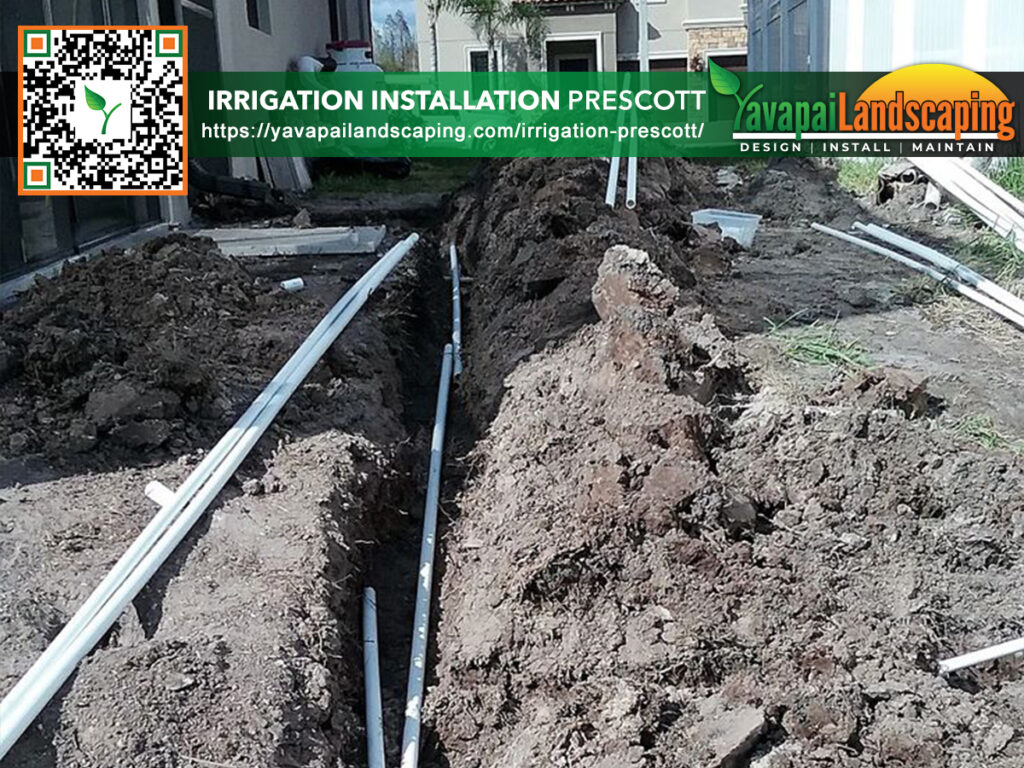The Arizona desert can be unforgiving for any landscape, requiring the right irrigation system to keep vegetation alive and healthy. Installing an irrigation system correctly is essential for successful landscaping in Prescott, AZ., ensuring plants get the proper water to grow and flourish. With careful consideration of the critical factors, Prescott homeowners can create an irrigation system that meets their needs and can last for a long time.
There are many factors to consider when installing an irrigation system, such as the property size, soil type, climate, and vegetation. It’s also necessary to determine the water pressure, the area that needs to be covered, and the type of irrigation system best for the property.

Determine Your Watering Needs
It is essential to understand your garden’s or landscape’s irrigation needs. With an accurate watering schedule, you can give your plants the moisture they need without wasting water. To help you with this, irrigation installation companies can help you design an irrigation system that meets your needs.
The first step is to assess the watering requirements of your plants, which will vary depending on the type of plants you have and your soil conditions. You’ll also need to consider your area’s climate and the amount of sunlight your plants are receiving. Once you understand your plants’ needs, you can create an irrigation plan that considers the amount and frequency of water your plants need.
Another essential factor to consider is the type of irrigation system you choose. Many different types of irrigation systems are available, from drip systems to sprinkler systems.
Choose the Right System
Installing an irrigation system is a great way to ensure your lawn and garden receive the precise water they need.
When considering which type of system to install, it’s essential to consider the size and shape of your landscape, the type of plants in your garden, and the amount of water they require. Various irrigation systems are available, from low-maintenance, automated systems to more complex, manual systems.
For automated systems, installing irrigation is a great way to ensure your plants are watered with the precise water they need. The system will be connected to a timer, automatically turning on the water at pre-determined intervals. This system will also include a rain sensor to turn off the water with sufficient rain.
Select the Right Equipment
The importance of choosing the right equipment must be recognized, as the equipment’s quality and reliability will determine the installation’s success.
Durability is a crucial factor to consider when selecting irrigation equipment. Poor quality materials and construction can lead to unexpected breakdowns and costly downtime and repairs. Look for equipment made from durable materials that are designed to stand up to the elements and last for many years.
Another important factor is ease of use. Selecting equipment that is simple to operate will make the installation process smoother and quicker. Look for equipment with intuitive controls and features that simplify the system’s operation.
The efficiency of irrigation equipment is also an essential factor to consider. Selecting efficient equipment will ensure that water is used efficiently, leading to cost savings and fewer water restrictions. Choose equipment with the latest water-saving technologies, such as timers and sensors, to maximize efficiency. Engage with this excellent read The Importance of Irrigation Services for Healthy Lawns and Gardens.
Plan the Layout
Now that the right equipment is selected, it is time to plan the layout. Laying out an irrigation system is a critical part of the process. Many factors come into play when deciding where to place the components within the system. Understanding the terrain, water runoff, and overall system design is essential before installation begins.
When designing the system, it is essential to consider the water flow. Slopes and elevations should be considered to ensure the system is set up in a manner that best utilizes the water pressure. Additionally, the location of the water source and the delivery points for the water should be considered when designing the layout.
To accurately map out the system, a site plan should be created. This plan should include the location of all components, the pipes, and the control valves. It should also include the direction of each pipe and where the water is being dispersed. Once the plan is finalized, it is essential to verify the measurements are accurate and that the components are placed correctly.
Test the System
Planning the layout is crucial, but it’s only the beginning. Testing the system is the next step to ensure everything runs smoothly. Before the system is operational, it is necessary to ensure that the irrigation lines are correctly connected and that the water pressure is adequate. Additionally, the water flow must be checked to ensure that it is sufficient for the size of the project.
Once the installation is complete, it’s time to test the system. This can be done in various ways, such as running the system briefly and checking to see if everything works correctly. If there are any issues, they must be addressed quickly to prevent potential damage to property or the environment.
After the testing, the system should be inspected to ensure that the correct components have been installed and the system is functioning as intended. Ensuring that the sprinklers are correctly adjusted and delivering the desired amount of water to the designated areas is essential.
Yavapai Landscaping Prescott offers complimentary estimates for Prescott and its nearby localities for landscaping and tree services, ranging from tree removal, trimming, stump grinding, land clearing, irrigation, and storm cleanup to emergency tree care.
